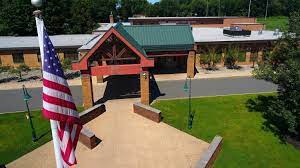On April 25th, 2015, an earthquake of 7.8 magnitude occurred in Nepal. The epicenter of the earthquake was located in the village, Barkpak, in the Gorkha district. This earthquake, also named the Gorkha earthquake, was the most powerful natural disaster to hit Nepal since the 1934 Nepal-Bihar earthquake. The earthquake was so powerful that it affected some of Nepal’s neighboring countries, like India, China, and Bangladesh.
In addition to damaging many villages, the earthquake also triggered an avalanche on Mount Everest, killing 19 people, which makes the earthquake the deadliest disaster on the mountain in history. This disaster resulted in the displacement of hundreds of thousands of people, due to the destruction of their villages.
The risk of an earthquake of this magnitude was known for some time before this disaster. Due to Nepal’s geological placement and architecture, the country was thought to be at risk for ruination at the hands of an earthquake. There were 120 officially recorded aftershocks, as of May 1st, 2015. The largest aftershock was recorded as having a moment magnitude of 6.7 on April 26th. The aftershock caused avalanches on Mount Everest as well as a landslide of Koshi Highway.
The casualties of the earthquake were devastating. It killed more than 7,500 people and injured over 17,000. One village in the Langtang Valley was completely destroyed by the earthquake and subsequent avalanches. Over 250 people died and many more are still missing.
Throughout the entire country, a number of buildings, with occupants inside, collapsed, causing architectural damage and many deaths. To over 65,000 displaced people, Great Britain has given emergency aid with their shelter kits. They said that the majority of the kits were in place prior to the earthquake’s occurrence, but they are planning to send 20,000 more in an attempt to give those afflicted by the earthquake a safe, temporary shelter. These aid agencies believe that these shelter kits are “saving many lives.”
Economically, Nepal will likely suffer from more than just the loss of many of its residents’ lives. Being one of Asia’s poorest countries, Nepal has little ability to fund a major construction effort of its own. According to the US Geological Survey, the economic losses due to the earthquake may add up to more than $10 billion in damages. The cost of rebuilding could be more than $5 billion. Nepal is a country with a large unemployment rate and a reliance on agriculture, so the damage from the earthquake may be long lasting.
However, not all news about the earthquake is negative. Fortunately, the role of social media, like Twitter, helped bring the Nepal earthquake into the spotlight and garner enough attention for it to become prominently featured on international news’ stations. The hashtag #GoHomeIndianMedia became popular after worry arose over Indian media’s misconduct in reporting on the tragedy. It was believed that they took up the necessary space on relief planes for their reports when other rescuers could have been sent; also, they were criticized for using their news’ networks to “carry out a public relations exercise” on the part of the Indian government rather than genuinely aid Nepal. Citizens of Nepal successful managed to get the interfering Indian media stations to leave and focus more attention on bringing aid into Nepal.
The international support has been uplifting as well. Many countries, from their governments as well as civilians, have donated money to the rescue effort. For example, India has dispatched 16 military and civilian aircraft and 1,000 members of its National Disaster Response and China has donated a 62-member search and rescue team as well as $10 million.
While the country has received a few cases of good news, in which some citizens were miraculously rescued from rubble and debris, much of the attention Nepal has received about the earthquake has been negative. Many citizens blame the government of Nepal for overlooking the threat of an earthquake and not being efficient enough in helping those affected. As of now, it is evident that Nepal requires aid to help reconstruct itself after suffering from the overwhelming natural disaster.



































